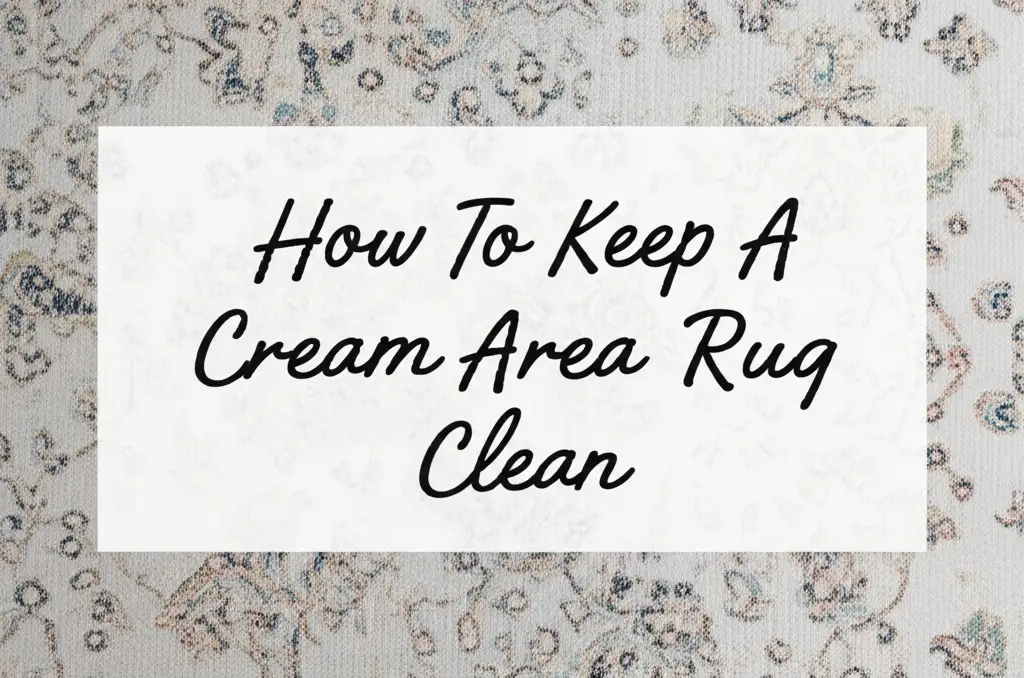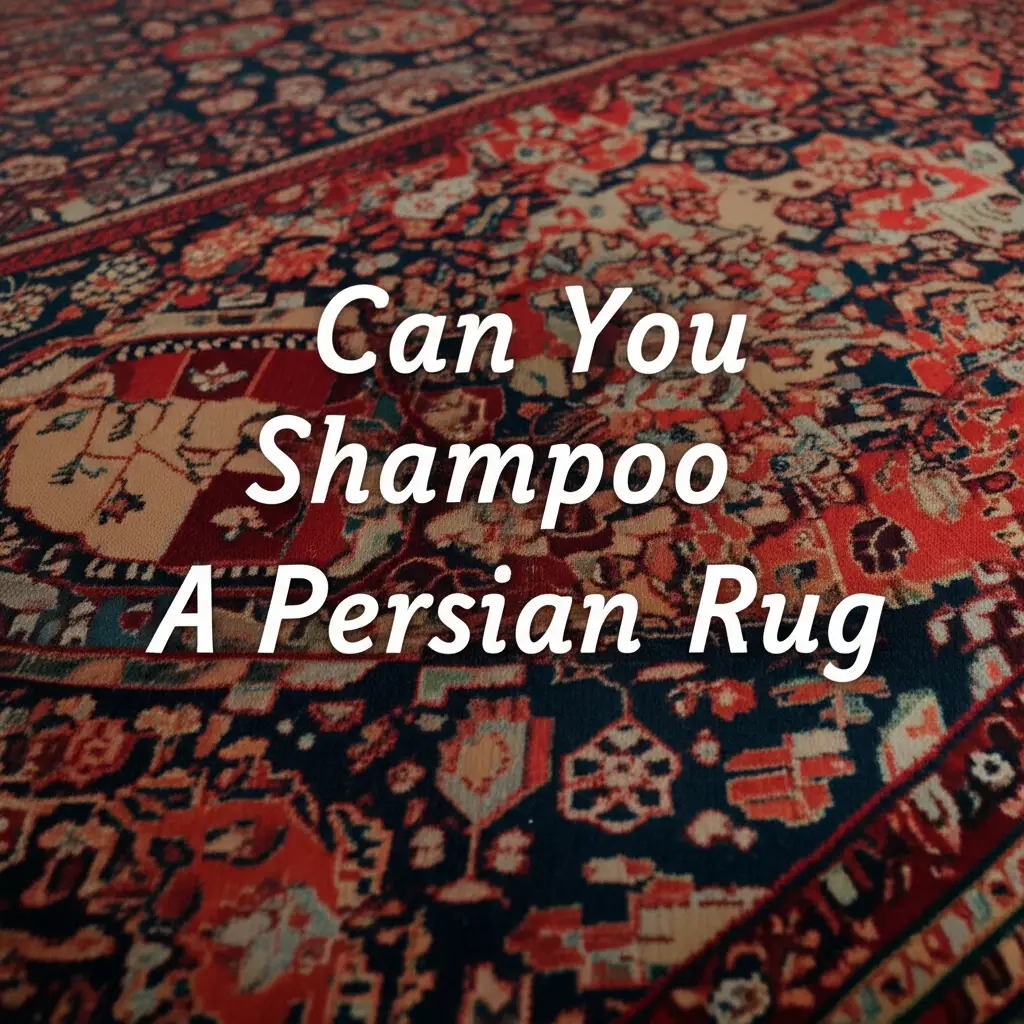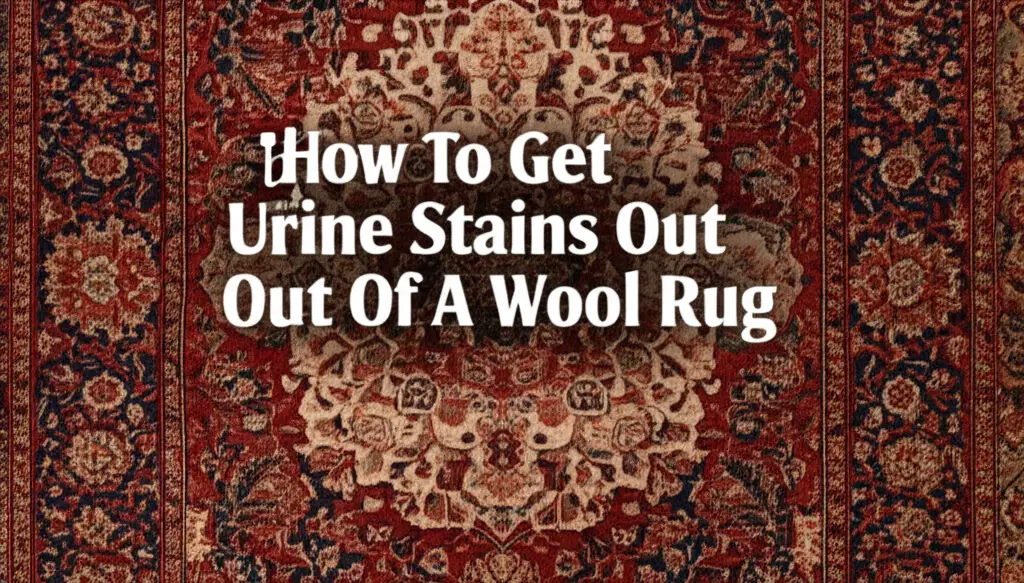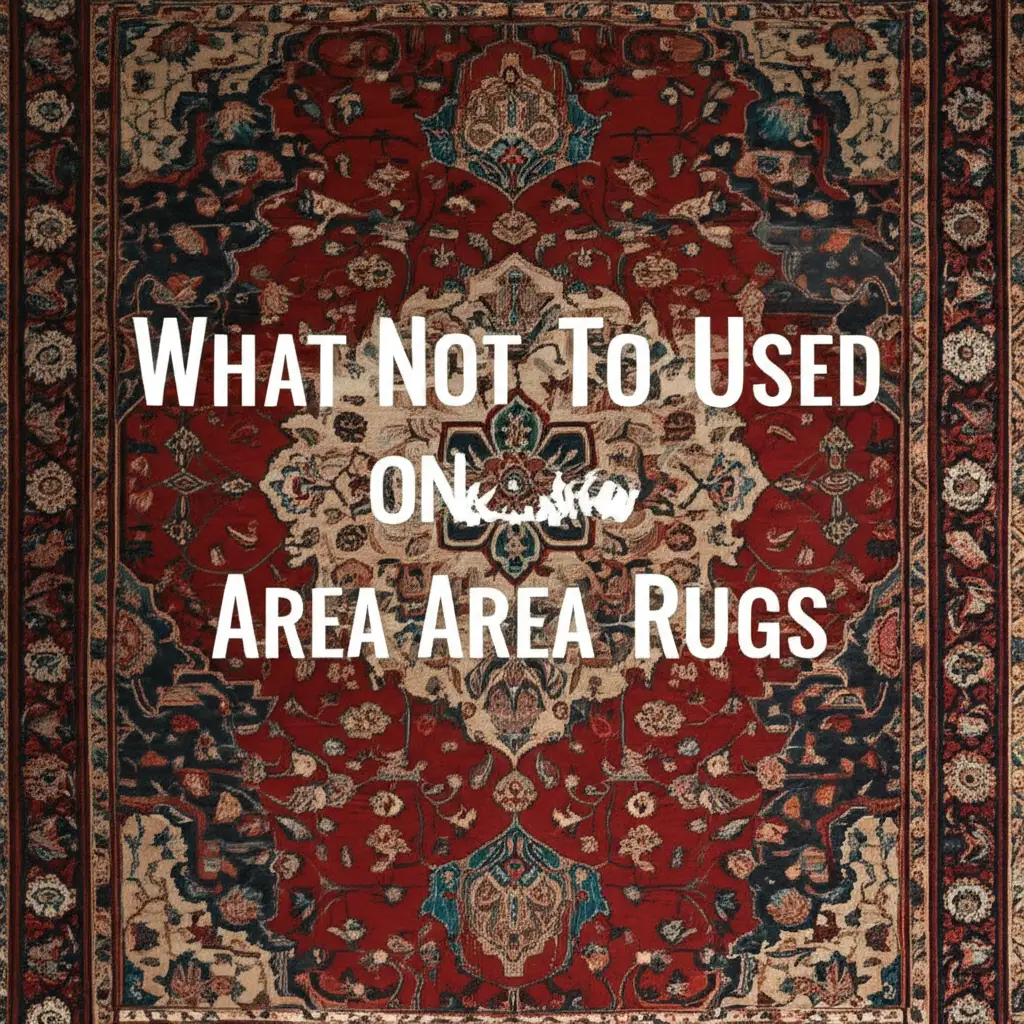· Elira Thomsen · Rug Care · 17 min read
How To Clean Wool Braided Rugs
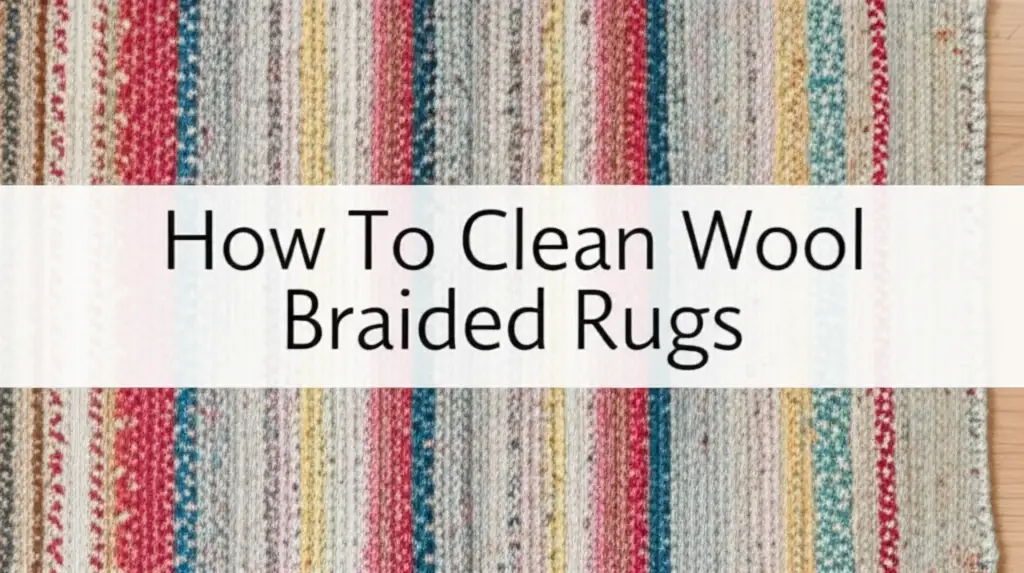
How To Clean Wool Braided Rugs: A Complete Guide
Maintaining the beauty of your home often includes caring for cherished items. Wool braided rugs are classic pieces. They add warmth and texture to any space. These rugs are durable, but they also attract dirt and spills over time. Knowing how to clean wool braided rugs properly helps keep them looking new. Incorrect cleaning methods can damage the fibers. This guide offers simple, effective steps. It covers everything from daily upkeep to deep cleaning and stain removal. You will learn the best ways to protect your rug’s lifespan.
Takeaway:
- Regular vacuuming and rotating your wool braided rug prevent dirt buildup and wear.
- Act quickly to spot clean spills with gentle dabs, avoiding rubbing.
- Deep clean your rug annually using mild solutions and thorough drying methods.
- Consider professional cleaning for large rugs or stubborn issues.
How do you clean a wool braided rug effectively?
To effectively clean a wool braided rug, first vacuum it regularly to remove loose dirt. Spot clean spills immediately with a mild detergent solution and a clean cloth. For a deeper clean, hand wash smaller rugs with a wool-safe shampoo or use a steam cleaner on larger ones, always ensuring thorough drying to prevent mildew.
Understanding Your Wool Braided Rug
Wool braided rugs offer unique charm and comfort. They are known for their strength and natural resilience. Wool fibers naturally resist dirt and stains. The braided construction means they are thick and durable. However, this construction can also trap dust and allergens. Understanding these features helps you clean your rug correctly.
Wool is a protein fiber. It reacts differently to cleaning agents than synthetic materials. Harsh chemicals can strip natural oils. This makes the wool brittle. Water temperature also matters. Hot water can cause wool to shrink or felt. You must use gentle, pH-neutral cleaners. Always test cleaning solutions in a hidden area first. This prevents accidental damage.
The braided style means dirt can settle deep within the strands. Regular vacuuming is crucial. It pulls out trapped particles. Turning your rug often helps distribute wear. It also exposes all sides to light and air. This keeps the colors even. Proper care extends the life of your rug significantly.
Essential Tools and Cleaning Supplies
Having the right tools makes cleaning your wool braided rug easy. You do not need many specialized items. Most are likely already in your home. Collecting these supplies before you begin saves time. It also ensures you are ready for any cleaning task.
First, you need a good vacuum cleaner. Choose one with adjustable height settings. A beater bar can be too harsh for wool. If your vacuum has one, turn it off or use the bare floor setting. Attachments like a crevice tool are useful for edges. Next, gather several clean, white cloths. Microfiber cloths work well. They absorb spills efficiently. White cloths prevent color transfer to your rug.
For cleaning solutions, start with mild options. Dish soap is often too strong. Look for a wool-specific cleaner. You can also make a simple solution. Mix a small amount of mild, pH-neutral liquid soap with water. A spray bottle helps apply solutions evenly. You will also need a soft brush or sponge. A bucket for water and a fan for drying are helpful.
Basic Cleaning Tools:
- Vacuum cleaner with adjustable height or bare floor setting
- Clean, white microfiber cloths
- Soft-bristled brush or sponge
- Spray bottle
- Buckets
- Fan or air mover
Gentle Cleaning Solutions:
- Wool-specific rug cleaner
- Mild, pH-neutral liquid soap (e.g., baby shampoo)
- White vinegar (for odors or light stains)
- Baking soda (for odors or absorbing moisture)
Always prioritize gentle products. Harsh chemicals can damage wool fibers. Learn more about cleaning different types of wool rugs. This keeps your rug looking its best.
Routine Care: Keeping Your Braided Rug Clean
Regular maintenance is the easiest way to keep your wool braided rug clean. It prevents dirt from building up. Consistent care also makes deep cleaning less frequent. I find that a little effort each week saves a lot of work later. This approach keeps your home feeling fresh and inviting.
The most important routine task is vacuuming. You should vacuum your wool braided rug at least once a week. For high-traffic areas, vacuum more often. Make sure your vacuum cleaner is set properly. A rotating beater bar can damage the wool fibers. Turn off the beater bar if your vacuum has this feature. If not, use the hose attachment. Vacuum the rug slowly in different directions. This lifts dirt trapped deep within the braids. Don’t forget to vacuum both sides if possible. This helps remove embedded dirt and extends the rug’s life.
- Weekly Vacuuming:
- Use a vacuum with adjustable height or no beater bar.
- Vacuum slowly across the rug in multiple directions.
- Clean both sides if feasible.
Rotate your rug every few months. This helps distribute wear evenly. It also prevents one area from fading more than another. If your rug is in a sunny spot, rotating is even more critical. You can also shake smaller rugs outdoors to remove loose debris. This simple action significantly reduces the amount of dirt that stays in your home. Discover how often you should vacuum rugs to maintain cleanliness.
Address spills immediately. Do not let them sit. The quicker you act, the less likely a stain will set. Blot, do not rub. Rubbing pushes the spill deeper into the fibers. Keep a small cleaning kit ready for emergencies. This includes a clean cloth and a mild solution. This proactive approach saves your rug from lasting damage.
Spot Cleaning: Tackling Spills and Stains
Spills happen. When they occur on your wool braided rug, acting fast is key. Most fresh stains come out easily with proper spot cleaning. I have learned that patience and gentle movements yield the best results. This method protects the wool fibers while removing the mess.
The first rule of spot cleaning is to blot, never rub. Rubbing a stain spreads it further. It also pushes the liquid deeper into the wool. Use a clean, white cloth or paper towel. Start from the outside of the stain. Work your way inward. This helps prevent the stain from spreading. Continue blotting until no more liquid transfers to your cloth.
For most spills, a simple solution works wonders. Mix one teaspoon of mild, pH-neutral dish soap with one cup of cool water. Apply a small amount of this solution to a clean cloth. Then, gently blot the stained area. Do not pour the solution directly onto the rug. You want to avoid oversaturation. Rinse the area by blotting with a new cloth dampened with plain cool water. This removes any soap residue. Residue can attract more dirt over time.
- Spot Cleaning Steps:
- Blot Immediately: Use a clean, white cloth. Do not rub.
- Prepare Solution: Mix mild soap with cool water.
- Apply Gently: Dab solution onto the stain with a cloth.
- Rinse: Blot with a cloth dampened with plain water.
- Dry: Press with a dry cloth. Air dry completely.
Some stains need specific treatments. For pet accidents, blot as much urine as possible. Then, use a solution of one part white vinegar to one part cool water. Vinegar helps neutralize odors. It also helps break down the stain. Follow up with the mild soap solution. Always ensure to dry the area completely afterwards. For more specific advice on tackling pet stains on wool, check out our guide on how to get rid of moths in wool rugs, as some principles of wool care apply. For grease stains, sprinkle cornstarch or baking soda on the area. Let it sit for 15-30 minutes. The powder will absorb the grease. Then, vacuum it up. Follow with the mild soap solution if needed. Proper spot treatment keeps your rug beautiful for years.
Deep Cleaning Your Wool Braided Rug
Even with regular care and quick spot treatments, your wool braided rug will eventually need a deeper clean. This process removes accumulated dirt and refreshes the fibers. I recommend deep cleaning at least once a year. For rugs in busy areas, deep clean them twice a year. This keeps your rug looking vibrant and extends its life.
Before you begin deep cleaning, prepare the area. Move furniture off the rug. Vacuum the rug thoroughly on both sides. This removes all loose dirt. Deep cleaning can be done in several ways, depending on the rug’s size. For smaller rugs, hand washing is a good option. Fill a bathtub or large basin with cool water. Add a small amount of wool-safe rug shampoo. Submerge the rug. Gently agitate the water with your hands. Do not scrub harshly. Let it soak for a few minutes. Then, drain the soapy water. Rinse the rug thoroughly with cool, clean water until no suds remain.
For larger wool braided rugs, hand washing is not practical. You can use a low-moisture cleaning method. A steam cleaner or a carpet cleaner with a wool-safe setting might work. Always use a wool-specific cleaning solution in the machine. Test the solution on an inconspicuous spot first. Work in small sections. Avoid over-wetting the rug. Excessive moisture can lead to mildew or damage. Extract as much water as possible using the machine’s suction. This step is critical for proper drying.
- Deep Cleaning Methods:
- Hand Washing (Small Rugs):
- Submerge in cool water with wool-safe shampoo.
- Gently agitate, do not scrub.
- Rinse thoroughly with clean water.
- Low-Moisture Machine Cleaning (Large Rugs):
- Use a steam cleaner or carpet cleaner with wool-safe solution.
- Test in a hidden area first.
- Work in small sections, avoid over-wetting.
- Extract maximum water with machine suction.
- Hand Washing (Small Rugs):
Consider using a vinegar solution for a deeper rinse or odor removal. Mix one part white vinegar with two parts cool water. Lightly spray this solution onto the rug after the main cleaning. Do not rinse it out. The vinegar smell will disappear as the rug dries. This helps neutralize odors and brightens the wool. Always ensure the rug is thoroughly dry before placing it back. You might find additional cleaning insights from our guide on cleaning handwoven wool rugs, as the principles of gentle care apply universally to wool.
Drying and Finishing Your Rug
Proper drying is as important as the cleaning process itself. If a wool braided rug does not dry completely, it can develop mildew. Mildew causes unpleasant odors and can damage the fibers. This step needs patience and good airflow. I always make sure my rugs are bone dry before putting them back.
After washing or deep cleaning, remove as much water as possible. For hand-washed rugs, gently squeeze out excess water. Do not twist or wring the rug. This can distort its shape. You can roll the rug tightly in clean, dry towels. Press firmly to absorb more moisture. Repeat with fresh towels if needed. For machine-cleaned rugs, the extractor should remove most of the water.
Next, lay the rug flat to dry. Choose a well-ventilated area. A warm, dry room is ideal. Avoid direct sunlight, as it can fade wool colors. If possible, hang the rug over a sturdy clothesline or several chairs. This allows air to circulate around all sides. Use fans or a dehumidifier to speed up the drying process. This is especially important in humid climates. Flip the rug occasionally. This ensures even drying. It also helps prevent moisture from getting trapped.
- Drying Steps:
- Remove Excess Water: Squeeze or roll in towels (for hand-washed rugs). Use machine extraction (for machine-cleaned).
- Lay Flat or Hang: Place in a well-ventilated area.
- Ensure Airflow: Use fans or a dehumidifier.
- Flip Regularly: Turn the rug to promote even drying.
- Check Dryness: Ensure rug is completely dry before placing it back.
Drying can take 24 to 48 hours, or even longer for very thick rugs. Do not rush this process. Walk on the rug periodically to check for any dampness. If you feel any coolness, it means moisture is still present. A completely dry rug will feel warm to the touch. Once dry, you can gently vacuum it again. This helps fluff the fibers. It also removes any last bits of debris. Now your wool braided rug is fresh and ready to use. For more general advice on how to clean area rugs inside, consider checking out our related resources for comprehensive cleaning methods.
Advanced Care and Professional Help
Sometimes, your wool braided rug might need more than standard cleaning. Certain situations call for advanced care techniques or even professional intervention. Recognizing when to seek expert help protects your investment. I have learned that some problems are best left to specialists.
One common issue is matting or crushing of the wool fibers. This often happens in high-traffic areas. You can try to rejuvenate matted areas yourself. Lightly mist the area with water. Then, gently brush the fibers with a soft-bristled brush. Use an upward motion. This helps lift and separate the wool. Avoid over-wetting. Too much water can make the problem worse. Once brushed, allow the area to air dry completely.
Serious stains or widespread damage require professional attention. If you have an old, deep-set stain that won’t budge, a professional rug cleaner has specialized tools and solutions. They can assess the type of stain and the rug’s condition. They use methods safe for wool. This minimizes the risk of damage. Extensive soiling or water damage also falls into this category. Trying to clean a severely soiled large rug at home can be overwhelming. It can also lead to improper drying and mildew.
- When to Seek Professional Help:
- Stubborn or Old Stains: When home methods fail.
- Extensive Soiling: When the entire rug is deeply dirty.
- Water Damage: If the rug was exposed to significant water (e.g., flood).
- Delicate or Antique Rugs: For valuable pieces requiring specialized care.
- Large Rugs: When home cleaning is impractical due to size.
Professional cleaners also offer moth treatment services. Wool rugs are susceptible to moth infestations. If you notice signs of moths, a professional can apply specific treatments. This protects your rug from further damage. They can also re-fringe or repair damaged braids. This restores the rug’s appearance. For detailed steps on how to get rid of moths in wool rugs, consult our specialized guide. Investing in professional cleaning every few years ensures your wool braided rug remains beautiful and durable for generations.
Common Problems and Solutions
Wool braided rugs are durable, but they can face specific issues. Knowing how to address these common problems helps you maintain your rug’s appearance. I have encountered several of these over the years. Having a quick solution ready makes a big difference.
Problem 1: Odors Wool can absorb smells from pets, cooking, or moisture. To tackle odors, sprinkle a generous amount of baking soda over the entire rug. Let it sit for several hours, or even overnight. Baking soda is a natural deodorizer. It absorbs unpleasant smells. After it has sat, vacuum the baking soda thoroughly. For persistent odors, repeat the process. You can also mix baking soda with a few drops of essential oil for a fresh scent. For pet odors specifically, a vinegar solution (one part white vinegar to one part water) sprayed lightly can also help neutralize smells. Just make sure the rug dries completely afterwards.
Problem 2: Fading Over time, exposure to sunlight can cause wool colors to fade. This is especially true for rugs near windows. To prevent fading, rotate your rug regularly. This ensures all parts of the rug get exposed to light evenly. You can also use UV-blocking window films. If fading has already occurred, there is little you can do to restore the original color. Prevention is key here.
Problem 3: Mildew or Mold This happens when a rug stays damp for too long. You might notice a musty smell or visible spots. If the mildew is minor, take the rug outside. Brush off any visible mold spores. Be careful not to inhale them. Then, clean the area with a solution of one part white vinegar to one part water. Allow it to air dry completely in sunlight if possible. Sunlight helps kill mold spores. For extensive mildew, professional cleaning is necessary. Ignoring mildew can lead to permanent damage and health issues.
- Solutions for Common Problems:
- Odors: Sprinkle baking soda, let sit, then vacuum. Use vinegar solution for pet odors.
- Fading: Rotate rug regularly, use UV-blocking window films.
- Mildew/Mold: Brush off visible mold, clean with vinegar solution, dry thoroughly in sunlight. For extensive issues, call a professional.
Problem 4: Curling Edges Sometimes, the edges of a braided rug can start to curl up. This can be a tripping hazard. To fix this, you can try applying weight to the curled edges. Place heavy books or furniture on the curled parts for a few days. For more stubborn curls, lightly dampen the edge with water. Then, weigh it down until dry. An anti-slip rug pad can also help keep the rug flat and in place. This also adds a layer of cushioning.
FAQ Section
Q1: Can I use a carpet shampooer on my wool braided rug? A: You can use a carpet shampooer, but with caution. Ensure it has a wool-safe setting or use minimal water. Always use a pH-neutral, wool-specific cleaning solution. Test the solution on a small, hidden area first. Extract as much water as possible after cleaning. Over-wetting can damage wool and lead to mildew.
Q2: How often should I professionally clean my wool braided rug? A: Professional cleaning is recommended every 3-5 years. For rugs in high-traffic areas or homes with pets and children, you might consider professional cleaning every 1-2 years. Professional cleaners have specialized equipment and expertise. They can handle deep-seated dirt and tough stains that home methods cannot.
Q3: Is it okay to put my wool braided rug in a washing machine? A: No, do not put your wool braided rug in a washing machine. The agitation and hot water can cause the wool to shrink. It can also distort the braided structure. Even small wool rugs should be hand-washed gently or spot cleaned. This preserves the rug’s shape and integrity.
Q4: What should I do if my wool braided rug gets wet from a leak? A: If your wool braided rug gets wet, act immediately. First, absorb as much water as possible with clean towels. Use fans or a dehumidifier to maximize airflow. Lift the rug to allow air to circulate underneath. If the rug is heavily saturated or left wet for more than 24 hours, it might develop mildew. In such cases, professional drying and cleaning are crucial.
Q5: Can I use a regular vacuum cleaner with a beater bar on my wool braided rug? A: A vacuum cleaner with a rotating beater bar can damage wool fibers over time. It can cause them to frizz or break. It is best to turn off the beater bar setting. If your vacuum does not have this option, use an upholstery attachment or the bare floor setting. This gentle approach helps preserve the rug’s texture and appearance.
Q6: What is the best way to remove pet hair from a wool braided rug? A: Regular vacuuming is the primary method for pet hair removal. For stubborn hair, use a rubber squeegee or a stiff brush. Drag it across the rug to gather the hair. You can also wear rubber gloves and rub your hands over the rug. The static electricity helps collect the hair. Lint rollers can also work for smaller areas.
Conclusion
Cleaning your wool braided rug does not have to be a daunting task. By following these simple, clear steps, you can keep your rug looking fresh and beautiful for many years. Regular vacuuming and quick action on spills are your best defenses. Remember to use gentle cleaning solutions and ensure thorough drying. This protects the delicate wool fibers.
I have found that a little consistent effort goes a long way. Whether it’s a routine clean or tackling a stubborn stain, these methods help maintain your rug’s warmth and charm. Your wool braided rug is an investment in your home’s comfort. Treating it with care ensures its longevity. Embrace these cleaning practices. Enjoy a cleaner, healthier living space.
- wool rug cleaning
- braided rug care
- rug maintenance
- stain removal
- home cleaning
- natural cleaning solutions
- DIY rug care


